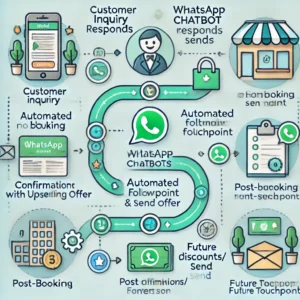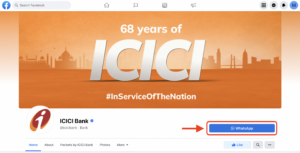It is well said by the Bill Gates “ Your Unhappy Customers Are The Greatest Source of Learning“.
With the increase in digital channels, and online reputation management keeping your customers happy is a big task. Customer complaints spread like fire on the social network. When a customer feels that they have been wronged they go out of there ways to tell people about it. Social media has become one of the biggest platforms to amplify their level of satisfaction or dissatisfaction about a brand.
There is always a customer who isn’t happy, no matter how good of a customers service is provided. You need to be aware as to how to handle this negative situation. These situation need to be handled efficiently or else not only you lose the customer you might have to deal with a bad reputation for your brand as well.
It is important to protect your brand reputation. Your team should be able to handle all the complaints on time by making it more convenient for the customers.


This kind of reviews on social media spoils the reputation of a brand. Even if a problem has been created, if the company takes the responsibility in their hands the customer will still be satisfied.
Here are 3 ways in which you can prevent, identify and also engage with the unhappy customers:
- Avoid complaints by analyzing the customer behaviour
Take care of the customers even before they bring you a complain. Keep a eye on them and resolve their issues. The brands should collect intelligent information on high impact shopper, and brand can keep a check on the behaviours of those customers who might complain offsite.
Doing this will help to know what
- Customers are hovering a complaint form or on the customer service page.
- Keeping a interaction record helps to know the site visitor who are more capable to complain.
- Customers who have been looking for some kind of support.
- Customers facing navigation problems.
With all these information about customers it helps to resolve their issues before they get upset and vent their frustration somewhere else.
2. Look into the matters that need your attention
Whether, a customer is happy or unhappy they do talk about your brand on different forums, social channels, blogs, sites or complaint bureaus.
The survey conducted shows a better picture.
More than 6 customers look into google to get customer review.
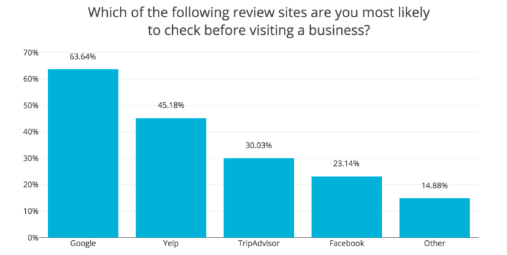
Since most of the traffic comes through Google, it effectively checks other review sites showing the star rating used before they click through their search results. Google has jumped ahead of many major players in the review industry.
Almost ⅔ of the people check Google for the reviews. So make sure you are presented in the Google my business listing and keep a watch over customer review.
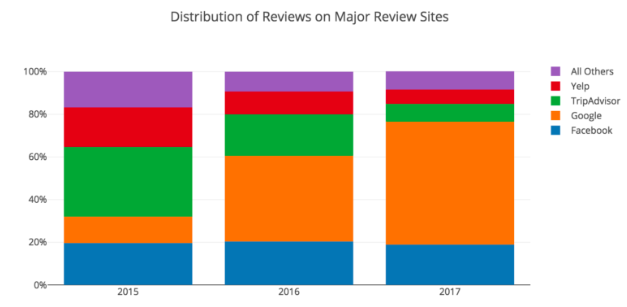
By having a social listening tool, a conversation can be tracked in real-time and understand the issues mentioned by the customer.
Listening to what customers have to say is a key to engage and put the necessary steps in place that will lead to a change in the conversation. Ignoring the social conversation can opt out to be a dangerous step, while you also miss out on opportunities to build better customer relationship.
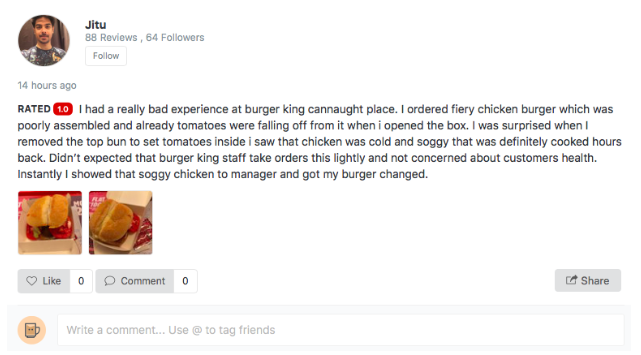
The person responsible for handling this has not given any kind of response. This will lead to losing your customers or either ruining your brand name.
3. Engage with customers
If someone posts a review about your brand on social media with a negative experience they would be wanting a response from your side and if they notice there is no response it only incite them to never come back to you. It may be difficult at times to handle a situation like this online but not responding only creates more trouble.
What To Do When Your Customer Gets Steamed?
Losing a customer could be damaging. Not only in terms of stature but also in monetary terms.
As per a report, 82% of consumers have discontinued their relation with a company due to bad customer service.
On the other hand, acquiring a new customer is 6-7 times more expensive than keeping a current one.
Considering the importance of good customer services for business, below I have mentioned an action plan.
It’s a bunch of key steps that should be followed while handling dissatisfied customers.
These steps will be helpful not only in resolving the issues, but they’ll also help in boosting your customer base.
- Put All Your Listening Skills to Use
The foremost thing to do while handling an angry customer is being a good listener. Vigilant Listening does half of your work. Listen patiently and let your customer vent out. Never ever argue or talk over the customer.
Instead, listen to whatever they are saying and try figuring out why are they being so aggressive and impatient. Being a patient listener assists you in understanding the whole issue.
- Don’t Take it Personally
The customer is yelling at you because you are the representative of your company. So there’s no point taking things personally. There might be situations where a customer would try to provoke you, but do not lose the temper.
Maintain the professionalism and understand the fact that customer is behaving that ways due to your company. S/he doesn’t know you personally.
- Change Your Stance
Imagine yourself in your customer’s place. You paid a good amount of money in exchange for a product or a service. But the quality wasn’t the way as you expected.
You called customer care and narrated your dismay.
The customer service agent’s reply: I understand the problem you must be facing, and I’ll try my best to resolve your problem.
Wouldn’t it be great to hear such kind and empathetic words?
Responding in a right manner is as important as listening to your customers’ needs.
Try doing the same with your customers and observe the difference.
- Apologize for the Inconvenience
Never forget to apologize for the inconvenience caused to your customer.
Because no matter what your customer is in trouble because of your company’s product. So, say sorry for the problem caused.
Also, make sure that your tone is not rude and shows real concern.
For instance: There could be two ways to apologize.
First: We regret the inconvenience caused to you. We’ll do every possible thing to resolve the issue.
Second: I am sorry. I will look into the matter personally and would take a prompt action to fix this issue. I’ll make sure no such problem will bother you in future.
See the difference and choose yourself.
- Walk Towards the Solution
Here’s a small incident that happened to me last month.
Since a long time, Myntra has been my first choice since for shopping. Last month, I ordered a dress from the site. It was in my hand within a day (as always). The product was exactly the way I saw on the website.
But after second use it got torn. I immediately got in touch with the customer care and narrated the whole story. They not only reacted promptly toward the issue but also apologized profusely.
Not only this, they asked me about how I want to get the issue resolved.
Though I was upset with the product quality, I was happy with their customer support.
Within 3 days, the dress was returned, and my money was refunded.
I was again their loyal customers who always brags about their product quality and customer care services.
What should be learned?
Handle your customers personally. As soon as you understand the issue, start working towards the solution. Be prompt and genuine while resolving their problem.
Bonus Tip: It is great to give your customer the lead to provide a prospect solution. This gesture makes them feel that the situation is under their control. Give suggestions wherever required.
“Ask your customers to be part of the solution, And don’t view them as part of the problem.”
– Alan Weiss
Some Additional Tips:
- While talking, observe your tone. Don’t be rude and make sure your replies show real concern.
- Talk as if the customer is sitting right in front of you.
- Always use a positive language while handling a customer. For instance: if the customer is asking for something that isn’t in your control, patiently explain the same to him/her. Support your response with a reason.
- Don’t jump to the solution. First, be clear on the issue the person is addressing.
- Never make false commitments as this can further worsen the situation.
Above mentioned is just a root map to what could be done to handle a dissatisfied customer. Rest depends on your skills, knowledge, and abilities.
Consider your customer as someone who’s in trouble. S/he has chosen you for help. It’s your moral duty to help him out. Chalk out your plan and try your best to assist your customer.
P.S. We’d love to know what you think about good customer services and what could be done to satisfy a dissatisfied customer. Share your ideas, suggestion, and experiences in the comment section below.
About the author
Co-Founder @ BigRadar. Building conversational interfaces for small and large enterprises.
- Sandeephttps://bigradar.io/blog/author/sandeep/
- Sandeephttps://bigradar.io/blog/author/sandeep/
- Sandeephttps://bigradar.io/blog/author/sandeep/
- Sandeephttps://bigradar.io/blog/author/sandeep/

